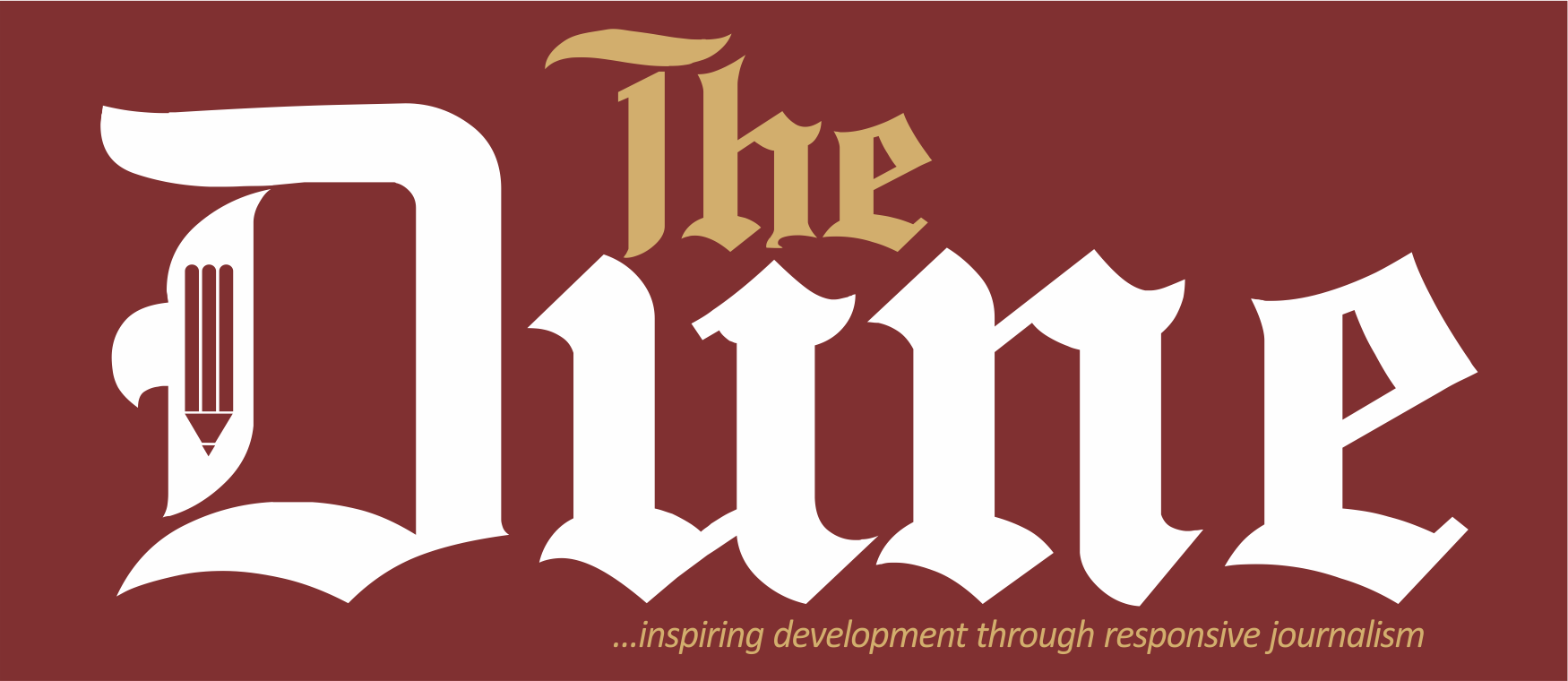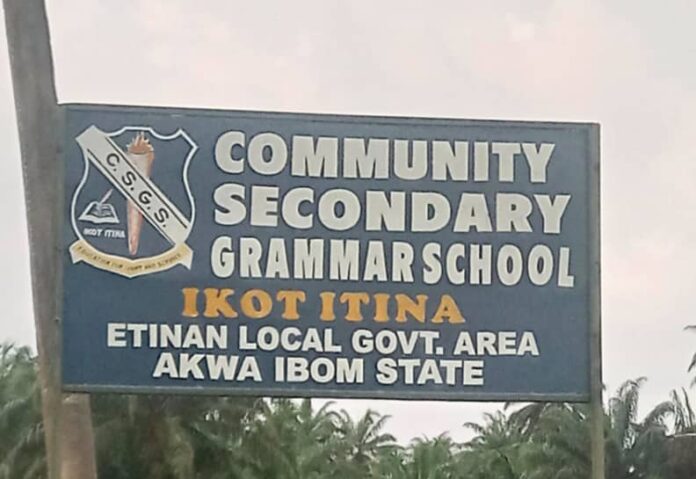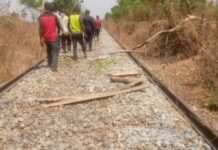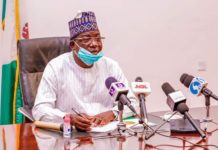Photo credit: Kufre Etuk
By Kufre Etuk, Jennifer Pius & Abasifreke Effiong
The federal government’s N-POWER programme provided a large, ad hoc manpower support to different sectors of the economy while it lasted. Though the programme was unjustly criticised by many Nigerians, experiences shared by public school teachers in Akwa Ibom in the past three months have shown that the N-POWER programme was a huge support to the State education sector where inadequate teachers has been a major concern.
Akwa Ibom State runs a free and compulsory education programme from Primary 1 to 6, and JSS1 to SS3. The yearly exponential increase in students’ enrollment in public schools in the State due to the free education programme has stretched the teacher to students ratio substantially.
Mr. Mike teaches Mathematics and Economics at Etinan Institute, Etinan, one of the foremost public schools in Akwa Ibom State. Mike as of last term when these reporters started this report had more than 600 students offering his subjects.
Mike shared his experiences teaching this large number of students during one of the weekends in December 2020. He told these reporters how his official workday starts early in the morning before 7a.m and ends in the afternoon with him on his motorcycle riding against the scorching rays of the sun.
From Monday to Friday, Mike rides his scooters motorbike, beating the weather and manoeuvring his motobike between broken patches of the over 20 years tarred road from Nung Udoe Ibesikpo to Etinan, a distance of about 10 kilometers.
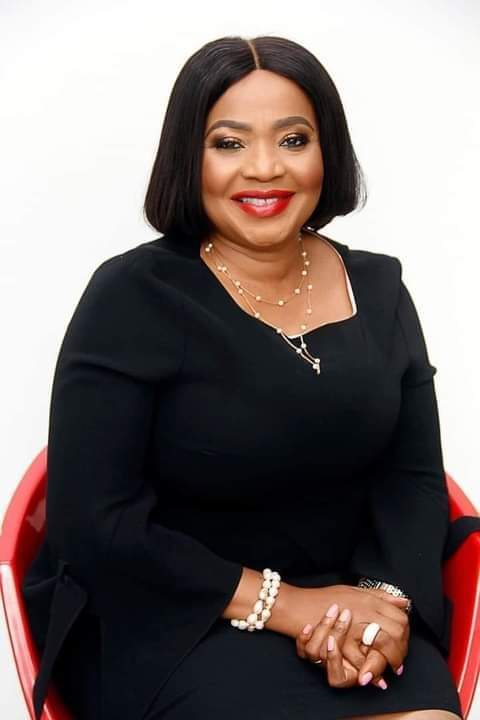 Mrs Idongesit Etiebet, Commissioner for Education, Akwa Ibom State.
Mrs Idongesit Etiebet, Commissioner for Education, Akwa Ibom State.
Mike teaches Mathematics in JSS1 and Economics in SS2. He said he spends at least 18 hours every week teaching “all arms of SS2 students from A-F and 12 streams of JS1 students.” Almost everyday, he finishes his class periods exhausted and would struggle to muster enough strength to ride home after he has rested for 30 to 45 minutes.
READ : Uyo to Calabar : Dangerous on land, convenient on sea
Mike said N-POWER teachers sent to Etinan Institute were a huge relief, but things have returned to status quo since the programme ended.
“The 14 N-POWER teachers sent to Etinan Institute really assisted many teachers. In fact many of us were relieved of workload but we’ve returned to status quo,” he said.
Etinan Institute as of last term had 3,804 students with 41 government-employed teachers. The teacher/students ratio is 1:93.
The school founded in 1915, is the alma mater of the first indigenous military administrator of the State who passed on recently, Late Otuekong Idongesit Nkanga, the Late Obong Ufot Ekaette, one-time Secretary to Government of Nigeria, and the current Chief of Staff to the Governor Mr. Ephraim Inyang.
At another popular institution, Uyo High School, there are 70 teachers overseeing over 4000 students. The teachers struggle to catch-up with the growing students’ population. “Students are really suffering”, Mrs. Eme Ekprieren, the Vice Principal Administration of the School said.
The withdrawal of the over 90 N-POWER teachers deployed to the school before the beginning of last academic term had worsened the porous learning environment in that school notorious for violence and vices.
After a heavy rainfall on a Tuesday morning in November 2020, students were seen struggling to jump across flooded pathways in the school. More than a hundred students were loitering around the school premises because there were no teachers in their classes.
When these reporters accosted three students among the loiterers and asked why they were not in their classes, their responses were that they went to collect notes from their classmates in another class.
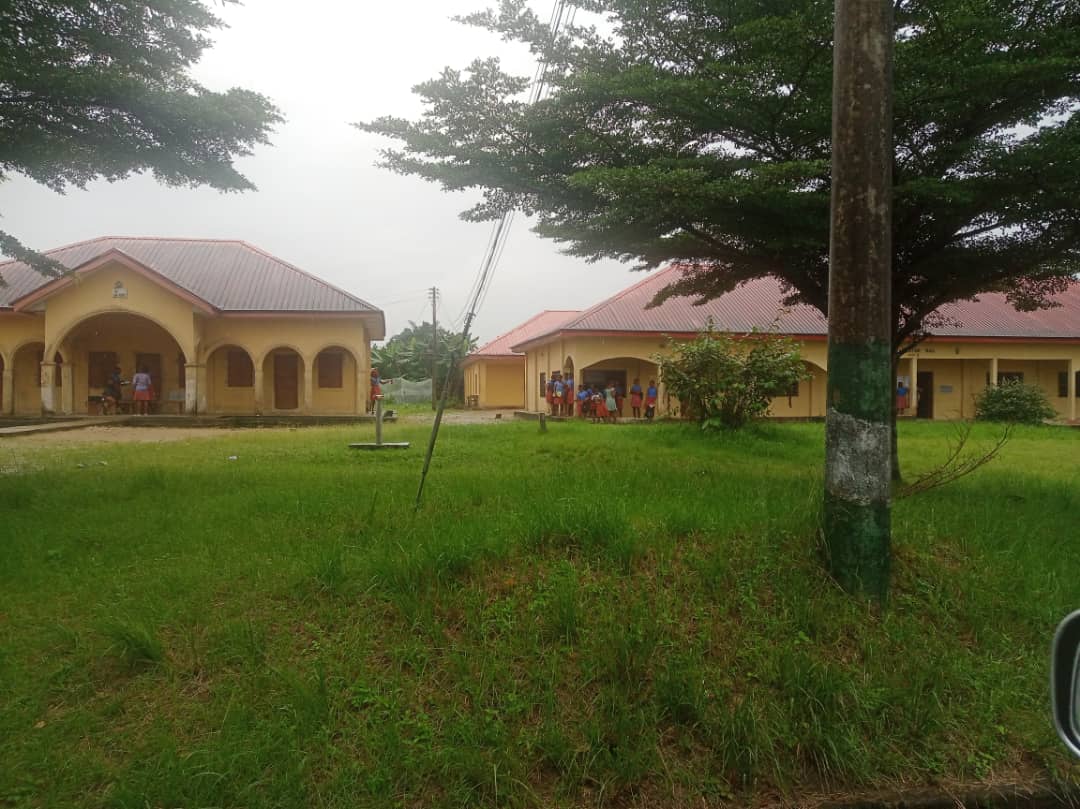 Students loitering in the varendah of their classroom at one of the schools. (Photo credit: Kufre Etuk)
Students loitering in the varendah of their classroom at one of the schools. (Photo credit: Kufre Etuk)
The 70 teachers in the school cannot attend to the needs of all the classes, these reporters learnt. A teacher who has up to nine streams of a class to teach take up to five streams leaving the four others with the option of copying notes from others. That is the situation in the school.
Mrs Ekprieren said, “the withdrawal of N-POWER teachers has really affected the school system.”
“Now, the workload on the teachers is too much. Some teachers can’t even meet up. In short the students are suffering. For now the principal has handpicked some of the N-POWER teachers to assist; those he can pay a token to at least take care of their fare have been coming around to assist us”
“After the COVID-19 pandemic break, we were asked to put 30 students per class but initially it was 50 students per class, sometimes 100 because we wouldn’t have classrooms enough to split the classes. Our classrooms are big, JS1 A and B can stay together. But now we have only 30 students per class. Formerly we used to have 15 streams of JSS1, now we have up to 22 streams and it is not easy for one person to teach all these classes; I have to be frank. Somebody can faint.”
“We are trying to cover the curriculum despite the inadequate number of teachers that’s why we teach on Saturdays. This is stressing us beyond limits but we’ll keep pushing on for the love our State and the students.”
From Uyo High School to Cornelia Cornelly College (CCC) Afaha Oku, Uyo, the story of inadequate teachers in Secondary schools in the State is more amplified.
The Principal of the school, Mrs. Grace Ekwere said “it’s not been very easy even as we came back from the COVID-19 break, we had to separate our students. We don’t have enough classrooms. Initially we used to put 100 students per class but now we have to separate them to 40 per class.”
 Advertisement.
Advertisement.
With students population of 4,442 and 68 teachers in the school, Mrs. Ekwere still believes though some of the 100 N-Power teachers sent to her school were lackadaisical about teaching, it was better than not having any assistance.
“The withdrawal of the N-Power teachers is really affecting us. Now, we are talking about a class expanding up to 14 arms and one teacher has to teach the 14 arms. Assuming we don’t have a time table clash, it means the teacher will be teaching the 14 arms at a stretch.”
“Sometimes I advise my teachers when they cover like three, they rest a little before they continue, ” she said.
Mrs Ekwere said with the current situation, the academic needs of the students cannot be met and this will have a telling effect on students’ performance in external examinations.
Between 2014 and 2017 Akwa Ibom State dropped four steps on the West African Examination Council’s performance rating. In 2014, the State was ranked 14th, but the performance of her students dropped to 17th in 2015, 2016, 2017, 2018 and 2019. However, the State Government spends N700 million yearly on payment of WAEC/NECO/NABTEB fees for final year students. As much as everyone applauds the government for paying so much for the students to write their external examinations, there is need to provide teachers for basic subjects in all the schools.
Community Secondary Grammar School, Ikot Itina, Etinan local government area does not have an English teacher.
At Comprehensive Secondary School, Ibiaku Itam, Itu local government area, the Principal-General, Mr. Bassey Okon said the 55 N-Power teachers posted to the school “assisted especially in teaching basic subject areas where there are no teachers.”
“As I am talking to you, we have shortage of teachers. So what we do is to bring students from different streams together and we have up to a hundred per class which is against the National Policy on Education.”
Mr Okon spoke on the plight of teachers in the school. “Like JS1 runs stream A to N. You can imagine the workload to a teacher who teaches a subject like English language. How can teaching be effective in this situation? Teaching and learning can’t be effective. If a child doesn’t learn what he’s supposed to learn in JS1, it builds up till JS3 and then builds up to SS1 it will surely affect the students during the national examinations.”
Mr Okon who has been a classroom teacher for 30 years plus said teachers are supposed to have one-on-one contact with students; where student’s population overwhelm that of the teachers, proper supervision becomes difficult, he stressed.
He however said as a temporal measure to check loitering among students due to the withdrawal of the N-POWER teachers, he brings different streams together and ensure that all classes are occupied by teachers during school hours.
Community Secondary Grammar School, Ikot Itina, Etinan LGA does not have an English teacher. The Principal said she had to appeal to the C.R.S teacher in the school to take up teaching of English Language from JSS1 to JSS3.
“We don’t have English teacher for both senior and junior classes. The only English teacher we had was transferred to the nearby school. One of the politicians in Mbioto 2 instigated the transfer of the teacher from this school to Mbioto 2, his community school. What the school does now is appeal to the teacher to come and assist us teach the senior classes whenever she is free in her other school. For the junior classes, it is the C.R.S teacher that teaches English language”, Principal of the school said.
A member of the Parents Teachers Association in the school said the issue of shortage of teachers and the suffocating workload on teachers is difficult to discuss.
He said : “the situation was so tough that we had to retain three of the N-Power staff because of the 3rd term promotion examination. They were paid out of the principal’s pocket. The three of them were paid N10,000 each.”
“The issue of inadequate teachers has been discussed at PTA, but since Government doesn’t allow for levy, we can’t do anything. Subvention is the thing of the past now. Throughout 2019 /2020 session, subvention was paid only once and that was in 3rd term.”
The Akwa Ibom State Government claimed in its audited report that N400 million was paid as subvention to 251 secondary/technical school heads at N200 per child in 2019. This implies that government paid subvention for two (2) million students in secondary schools in the State that year. Stakeholders in the State secondary and technical school Boards have said that the students population in all secondary schools in the State is not up to 500,000 as of the beginning of 2019/2020 academic session.
Principals are making huge sacrifices to keep the schools running even when government is not paying subvention frequently. Some principals said they have spent a chunk of their meagre salary to buy chalk, exercise books and biro for notes of lesson, and pay ad hoc staff in many cases. Teachers are taking on more workload than they can handle satisfactorily. Despite these patriotic efforts, some students in schools visited by these reporters said the attention they get from their teachers is below average.
MORE STORIES : 30,000 households enroll for Nasarawa Health Insurance Scheme
SS1 student at CCC who simply gave her name as Kate told these reporters reluctantly how frustrating learning is because of inadequate teachers.
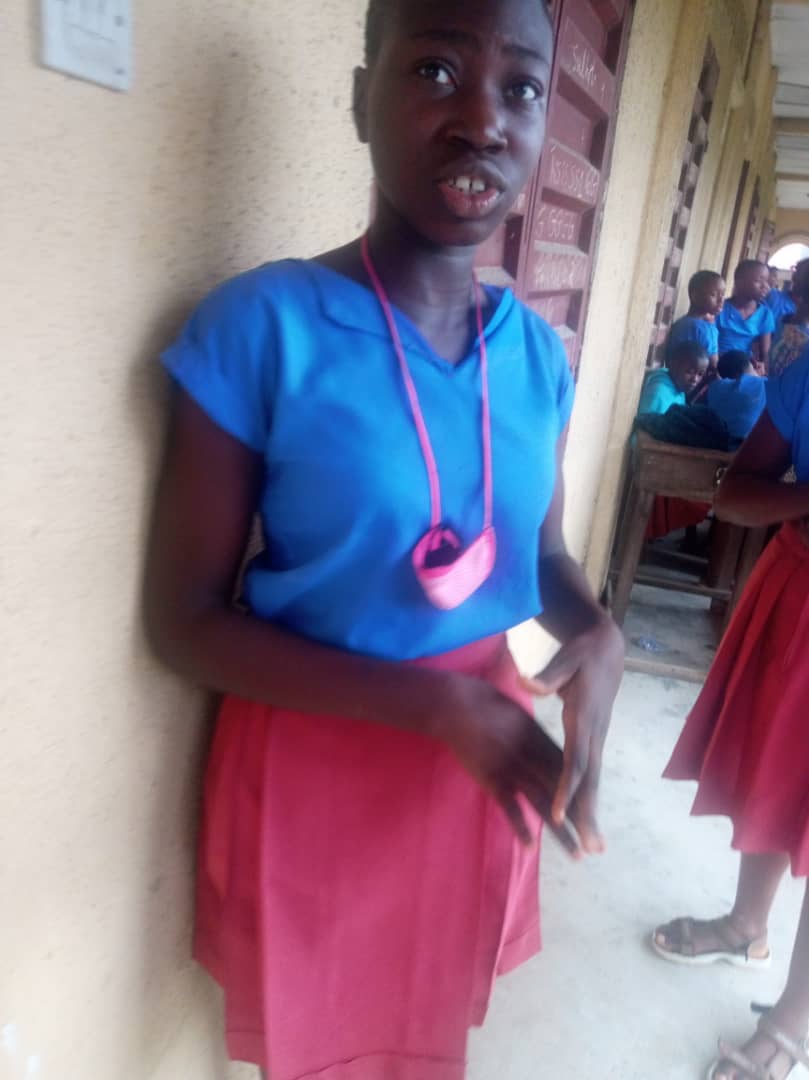 Kate, a student of CCC, Afaha Oku.
Kate, a student of CCC, Afaha Oku.
“What we do is that if we know that a teacher cannot enter our class, we would move to join the next class where the teacher teaches or collect notes from our mates in that class.”
“Some of our teachers have a clash of timetable and in that case they may not be able to come and teach. We have 14 classes for SS1 only.”
“If we have teachers in each of the classes we will have notes and understand the lessons. Some teachers only come and ask us to copy notes from our classmates in other sections and hurry to meet up with the next class.”
“Sometimes when we collect notes to copy, what we copy may not be what the teacher gave and when reading it, we may not understand,” Kate said.
HOW MANY TEACHERS DO SECONDARY SCHOOLS IN AKWA IBOM STATE NEED?
In 2016, the Permanent Secretary, Akwa Ibom State Secondary Education Board, Mr Akpan Solomon, said the Board needs at least 500 new teachers yearly to fill vacancies created in the system by the retirement, withdrawal and untimely death of teachers.
Mr Solomon told the House of Assembly Committee on Appropriations and Finance that students’ enrollment in public secondary schools which stood at 347,697 against 11,000 teachers (as of 2016) was worrisome and cannot guarantee effective teaching and learning.
READ : Lalong urges Nigerians to encourage the Armed Forces
The State Secondary Education Board has employed additional 2000 teachers between 2017 and 2018 (1500 teachers in 2017 and 500 teachers in 2018); however there are still lack of teachers for basic subjects like English language and Sciences. This has kept the State farm away from her desire of having a-one-teacher-one-subject policy.
In November 2020, the Prof. Hilary Inyang led State Think-Thank Committee on Education, in a-10 year education roadmap recommended that 2000 teachers should be employed and re-trained within eight months to “remediate the deficiency in number of teachers in Secondary schools in Akwa Ibom State.” That same month, in showing commitment to the implementation of the 10 years Education road map, the State Executive Council chaired by Governor Udom Emmanuel, approved recruitment of 1000 teachers. The State Secondary Education Board on Monday 11th January, called for applications for 1000 job opportunities in the schools. This recruitment will add at least three new teachers each to the staff pool in secondary schools (now 266) in the State.
Meanwhile, these reporters noted that there is a lopsided spread of available teachers to schools in the State, hence, the reason some schools have less number of teachers proportional to the student’s population while some with a smaller student’s population have more teachers. For instance, Comprehensive Secondary School, Ibiaku Itam, Itu local government area with a student population of 3200 has 88 government employed teachers, CCC Afaha Oku with a student population of 4442 has 68 teachers and Uyo High School with 4000 students has 70 teachers.
The Prof Inyang’s committee said the aggregate teacher/students ratio in secondary schools in the State is 1:20. However, these reporters noted that some schools with an aggregate number of teachers proportionally higher than the students population were still complaining of inadequate teachers. The teacher/students ratio at Comprehensive Secondary School, Ibiaku Itam, Itu local government is 1:37 a little above the ratio of 1:30 recommended by the United Nations, yet the PTA still complained of inadequate teachers.
At CCC Afaha Oku, the aggregate teacher/students ratio is 1:68; at Uyo High School, it is 1:58. These data set suggest that some secondary schools in the State are not very grossly under-staffed. However, the data sets point to three things: that the available teachers do not match the subjects needs; that the available teachers are not spread evenly and proportionally across schools based on students population; and, that all the teachers (aggregate manpower) are not optimally deployed and put to optimum use.
This story was inspired by Next Edition and XL FM War room training for journalists, 2020.

